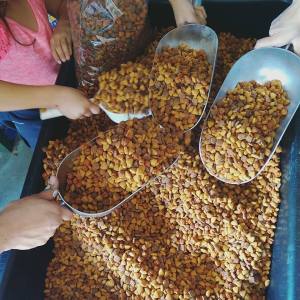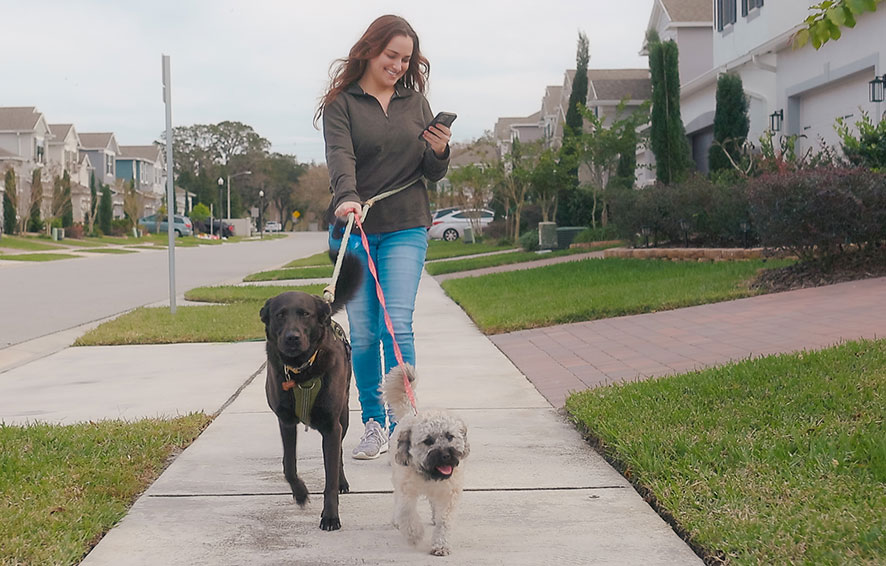Key Takeaways
- Pet food banks and pet food pantries collect and distribute pet food for people in need.
- This assistance is provided through humane societies and other dedicated organizations.
- Healthy Paws has supported pet pantries in Bakersfield, California and Central Oklahoma.
- Most states have at least one pet food pantry nonprofit organization.
- These groups serve thousands of people and pets in their communities daily.
Table of Contents
For people struggling financially, there are lots of local programs that provide food to their pets. Organizations called “Pet Food Banks” or “Pet Food Pantries” work hard to collect and distribute thousands of pounds of pet food to low-income families and individuals in need every month. By doing this, they keep pups and cats with the families that love them.
These pet food banks help pet parents when they fall on hard times, whether that is an emergency, or a long-standing financial or medical situation. This extra assistance can be a part of local humane societies or organizations dedicated solely to the cause of providing food, and they help everyone from veterans to home-bound seniors, families in crisis to community members in need, as well as those diagnosed with HIV/AIDS or cancer.
The number of pet food pantries and food banks across the US are steadily growing, with many states operating at least one nonprofit organization. Their mission? To help pet parents suffering from hardships stay together with their best furry friends. There are usually special requirements to receive the food, including an application process and some screening on the part of the organization. Overall, they serve thousands of people and pets daily in their own communities.
Healthy Paws supported two pet pantries this past year due to their exemplary service to the community and an allegiance to making sure pets have full bellies.
Bakersfield Pet Pantry

From testimonials to instructions on how to host your own pet food drive, this California pantry serves low-income residents and seniors in the community to keep people and their pets together. “In 2009, Cindy Frye and her husband Ken recognized that many of the people who showed up at a church-run soup kitchen in Oildale, CA not only needed food for themselves, but for their pets as well,” explains board member Christina Amoroso. “For the next six months, the Fryes purchased pet food using their own funds and brought the food themselves to the neighborhood.” It spread quickly, and friends joined in the mission, realizing the need was far greater than what they were seeing just at the church soup kitchen. Since inception, the Pantry has distributed more than 275,000 pounds of pet food to animals happily living with their families who need the assistance.
Central Oklahoma’s Food Bank for Pets
Founder Kim Pempin says, “Can you imagine having to choose between feeding yourself and feeding your pet? Digging through trash to find food for your furry companion or giving up your pet because you can’t feed them?” For the many people of Oklahoma that COFBP serves, this is their reality and their pets are their only family – or even their only friends. Pempin continues: “The human-animal bond is vital to a person’s well-being, offering companionship, unconditional love, joy, comfort, friendship and acceptance – all without judgment. No one should face the decision of giving up their pets just because they have no resource for pet food. Most likely these people are sharing their food with their pets–feeding their animals before feeding themselves. The people we serve love their pets unconditionally and will give up the last bite of food before seeing them go hungry.” They currently serve over 8,000 lbs of dry food and over 2,500 cans of wet food each month to cats and dogs belonging to the homeless, elderly and veterans in Oklahoma.
The stories about pet parents suffering from misfortune can be heartbreaking. The Huffington Post reported in 2015: “after her husband became disabled in 2001 and [Denver resident Theresa O’Connor] had to stop working to care for him, it became a challenge to feed her three beloved dogs Bella Amor, Jazzi and Boss. Since food stamps don’t cover dog food, she began buying human food and cooking it for her dogs – while going hungry herself.” Animals are crucial to our daily lives and to our happiness; any pet parent will tell you that but science proves it. Pet food banks keep people and pets together, so a senior who can’t get around and is on a fixed income doesn’t have to go without, or for those who may be buried in financial hardship don’t have to choose between feeding their pets and feeding themselves. Healthy Paws is happy to salute these two food banks and recognizes the good work these organizations are doing to change the conversation about pet parenthood, adversity, and the importance of sticking together.
Find out more about the Healthy Paws Foundation and learn about how to help support rescues and animal advocates nationally. With your free quote for Healthy Paws pet insurance, you’ll help fund more grants. If you’ve got a story you’d like to share with us about your pet or an organization in your community, please send it our way!







